Our latest look at new and recent books about (or connected to) cinema includes looks at a couple beloved classics (Scarface and The Blues Brothers), a unique photography book by Dune dudes Josh Brolin and Greig Fraser, and a deeply involving account of the life of iconic Warhol superstar Candy Darling. Plus, we’ll run through some noteworthy novels that belong on your summer reading list. The world is yours, friends.
The World Is Yours: The Story of Scarface by Glenn Kenny (Hanover Square Press)
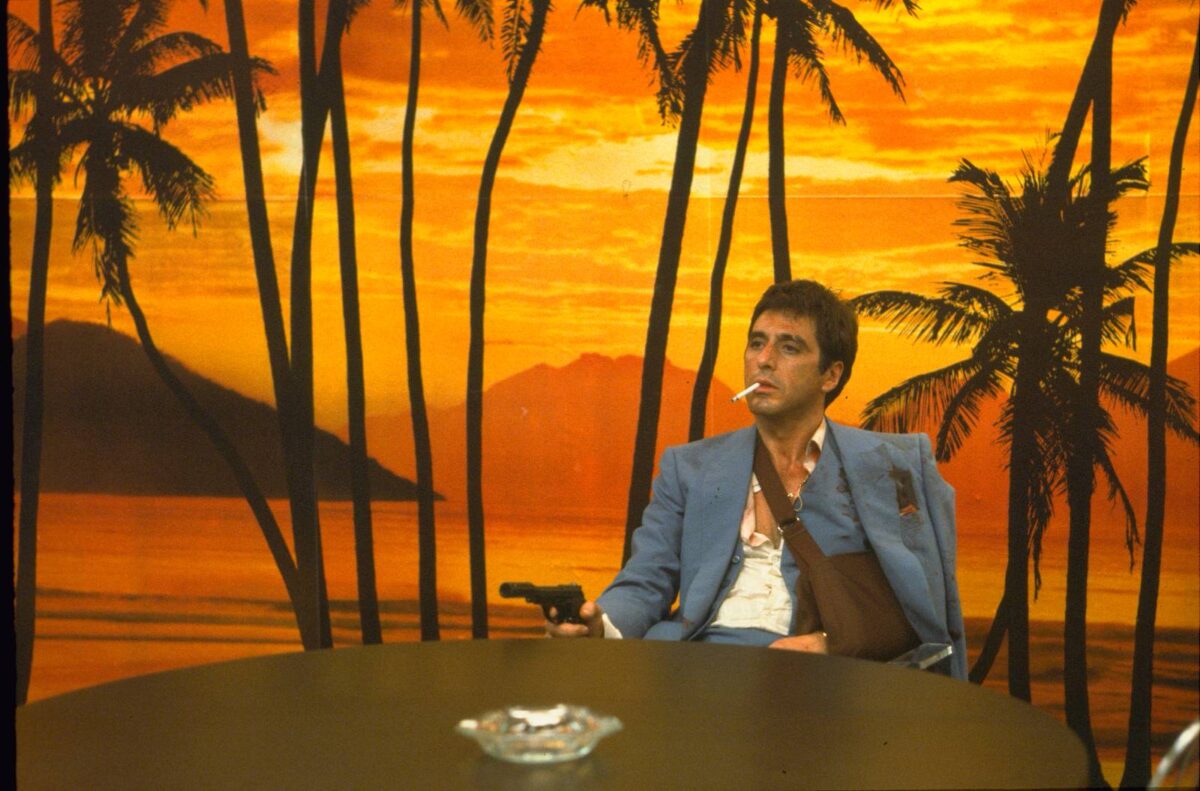
If you are a film fan who has read Glenn Kenny’s Made Men, the blood-drenched dive into the making of Goodfellas, there is a good chance it is one of your favorite books. Kenny’s follow-up is a look into the creation and legacy of another ultra-violent classic, Brian De Palma’s Scarface. Unsurprisingly, The World Is Yours: The Story of Scarface is damn near as impressive as Made Men. The subject itself is, of course, part of the reason––Scarface is as luridly entertaining today as it was upon release. That was not always the view, of course. Kenny delves into the horror that greeted the film, from critics and audience members like Kurt Vonnegut (!): “Were the A-listers who attended the simultaneous bicoastal preview screenings of the movie warned? Possibly not.” To reflect on the making of Scarface and its lasting significance, Kenny shares new interviews with most of the major players: De Palma, screenwriter Oliver Stone, co-stars Steven Bauer and Michelle Pfeiffer. So memorable as Elvira, “the only one of the movie’s four central characters who does not meet a violent death,” Pfeiffer explains that the production was a traumatic experience for her. She was just 23 years old and had only a few credits (including a starring role in Grease 2) before being cast in Scarface. Pfeiffer says she was treated well by everyone involved, but was petrified: “I was tortured every day. Every single day.” This is just one example of the Scarface insights unearthed by Kenny, one of our finest film writers.
Dune: Exposures by Josh Brolin and Greig Fraser (Insight Editions)
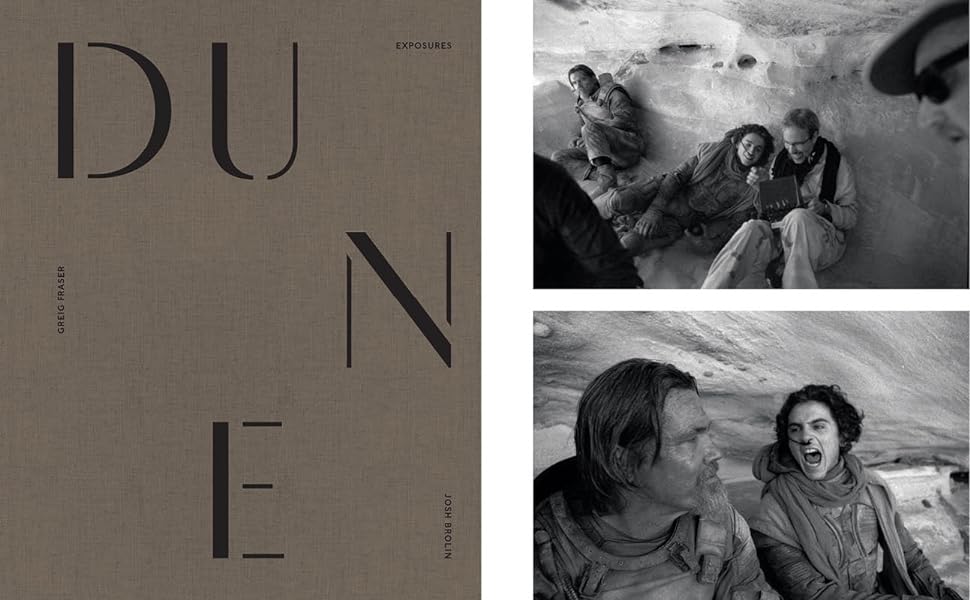
The number of books connected to and inspired by Denis Denis Villeneuve’s two-part adaptation of Frank Herbert’s Dune continues to grow. Among the most unique (and pricey) is Dune: Exposures. Beautifully crafted, the book includes photographs from Dune cinematographer Greig Fraser and poetry from Gurney Halleck himself, Josh Brolin. The images capture moments of spontaneity (a bloodied Austin Butler and a badass Florence Pugh striking a pose), intimacy (Brolin and Timothée Chalamet sharing a laugh during the making of Part Two), and humor (Rebecca Ferguson slumped in a chair, sipping what appears to be a juice box). And Brolin’s words are both sharply observational and enjoyably silly. Example: “I never got to see Bautista when he was there, but I knew he was there because everybody knew he was there. / He’s Bautista.”
The Blues Brothers: An Epic Friendship, the Rise of Improv, and the Making of an American Film Classic by Daniel de Visé (Atlantic Monthly Press)
Growing up, there were a few movies that my family invariably watched every few months, and near the top of that list was 1980’s The Blues Brothers. While there have been many books written about co-star John Belushi, one focusing on The Blues Brothers was sorely needed. Author Daniel de Visé has crafted a tremendously entertaining account of the destructive (in many ways) production process, and also offers in-depth profiles of Belushi and Dan Aykroyd. It is fascinating now to read about the reviews to the film (“They were dreadful,” de Visé writes). Today, of course, it is considered a classic; even Sister Mary Stigmata––“The Penguin”––would likely approve. After all, “In 2010, the Catholic Church declared The Blues Brothers a ‘Catholic classic,’ one of a dozen films recommended for viewing by the flock, a list that included The Ten Commandments and It’s a Wonderful Life. A mission from God, indeed.”
Candy Darling: Dreamer, Icon, Superstar by Cynthia Carr (Farrar, Straus and Giroux)

Cynthia Carr’s biography of Candy Darling, the Warhol superstar and queer icon whose impact is still felt, is so powerful and vivid that it demands to be read more than once. Carr unearths never-before-heard details on the early life of Candy. Note that Carr calls her by her first name throughout the book, which the author explains thusly: “What made sense to me in the end was to consider what Candy would have wanted,” Carr states. “So I am calling her Candy.” She adds that this is “the story of becoming Candy. The word ‘trans’ implies a journey.” Excerpts from the Kim Novak-obsessed teenager’s diary are both fascinating and heartbreaking. “To go through her diary is to absorb a real sense of Candy’s isolation,” Carr writes. Stardom, and Candy’s role as a trailblazer, were yet to come. She died young, and late in Candy’s life Carr identifies “depression and the wish-I-was-dead writing” in her journal. There may have been “no place for her in Hollywood or on Broadway” in the year she passed away, 1974. But in 2024, Candy Darling has never seemed more important, more breathtaking, and––thanks to Dreamer, Icon, Superstar––more alive.
A Good Bad Boy: Luke Perry and How a Generation Grew Up by Margaret Wappler (Simon & Schuster)
For the generation that grew up idolizing or lusting after Luke Perry on Beverly Hills 90210, the actor’s death in 2019 felt like a punch to the gut. How could this icon––recently seen in his most high-profile project in years, Quentin Tarantino’s Once Upon a Time in Hollywood––pass away at just 52 years of age? Margaret Wappler’s A Good Bad Boy wrestles with this question, and analyzes why the impact of Perry’s death was so strong. The book is packed with memorable details, such as Quentin Tarantino’s reaction to Perry at a casting session for Once Upon a Time in Hollywood: “Quentin, as is often his way, quickly disarmed [Perry] with a steady stream of chatter. He remembered certain roles of Luke’s, including several Criminal Minds episodes where Luke recurred as a charismatic cult leader.” The greatest takeaway, though, is that Perry was far more than Dylan McKay. He was, in the words of a friend, “the most dedicated and loving father he’d ever seen.”
Quentin Tarantino: A Graphic Biography by Michele Botton and Bernardo Santiago Acosta (Frances Lincoln)
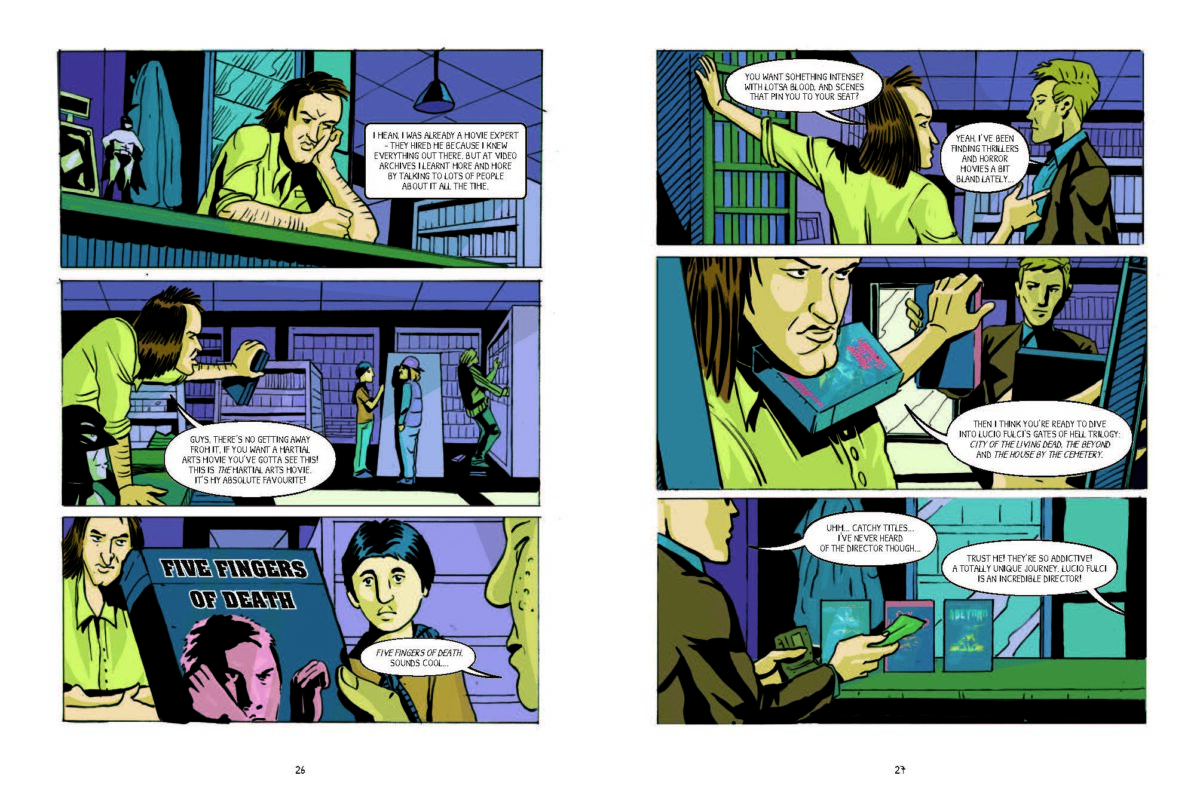
Tarantino was back in the news recently thanks to the news that his planned tenth (and “final”) film, The Movie Critic, had been shelved. It was yet another intriguing mystery in the Tarantino universe, and would fit right in with the vignettes that make up Quentin Tarantino: A Graphic Biography. Author Michele Botton and illustrator Bernardo Santiago Acosta employ a fun framing device here, as the graphic novel lets us see what may have happened during key events in the writer-director’s life. For example, we watch as he talks John Travolta into starring as Vincent Vega, plans Kill Bill with Uma Thurman during a coffee shop chat, and discusses some of his most violent scenes with Brad Pitt and Leonardo DiCaprio. This is a clever way to delve into some oft-told anecdotes and––surprisingly––it works.
Old Hollywood
The most compulsively readable book about old Hollywood so far this year might be The Fixer: Moguls, Mobsters, Movie Stars, and Marilyn (Grand Central Publishing) by Josh Young and Manfred Westphal. Its subject, fixer to the stars Fred Otash, clearly inspired characters in L.A. Confidential and Hail Caesar. However, the ex-Marine more than warrants his own biography. As explained by Young and Westphal, Otash was haunted by his role taping Marilyn Monroe, whom he considered a friend. Hearing her death on tape was agonizing: “He was tormented by the events and circumstances surrounding his friend, the world’s greatest screen siren, dying on his watch.”
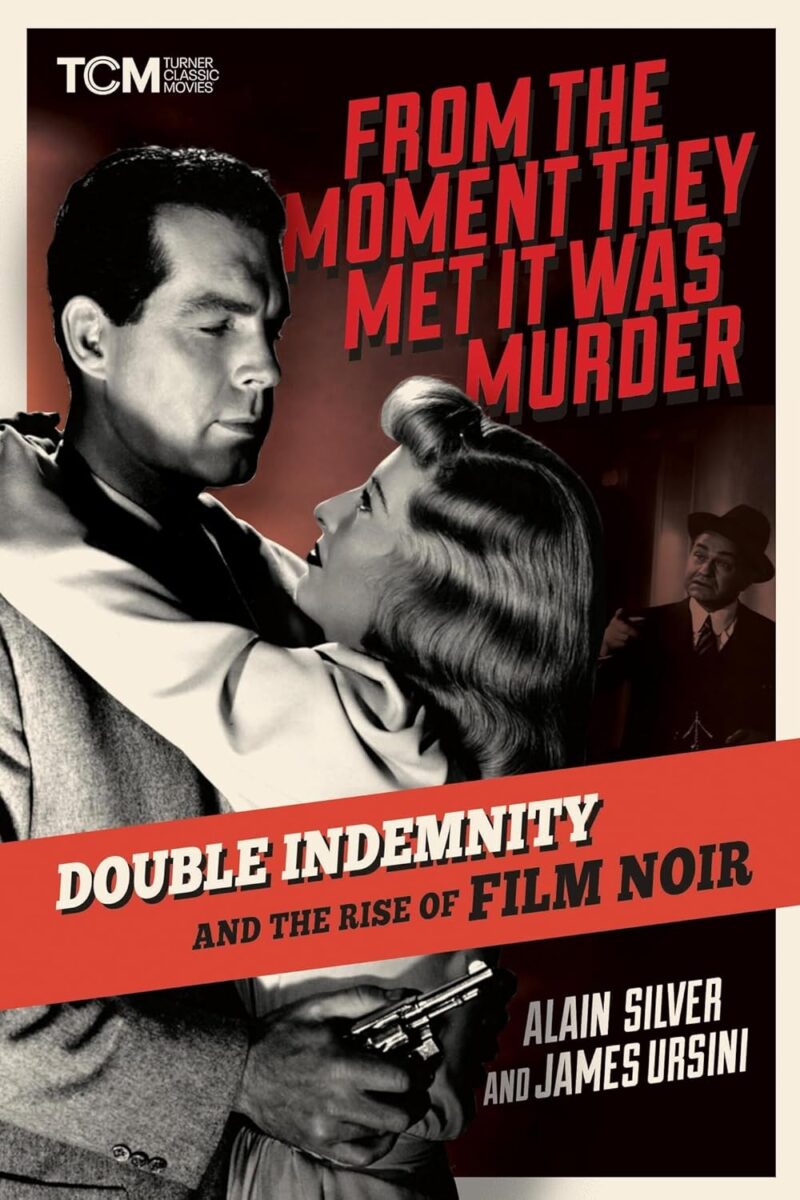
Another gem is From the Moment They Met It Was Murder: Double Indemnity and the Rise of Film Noir (Running Press) by Alain Silver and James Ursini. This razor-sharp study of Billy Wilder’s classic might be the definite Double Indemnity study. Especially gripping is its account of the real crime that inspired the story. Playing the Percentages: How Film Distribution Made the Hollywood Studio System (University of Texas Press) by Derek Long is an exhaustively researched exploration of Hollywood distribution, and the impact of the studio system. Lastly, on the lighter side is Forbidden Cocktails: Libations Inspired by the World of Pre-Code Hollywood (Turner Classic Movies) (Running Press) by André Darlington. Making a Baby Face-inspired “Fuzzy Wuzzy” or a Marlene Dietrich-approved “Blonde Venus” before reading about Hollywood fixers, killers, and power struggles is highly recommended.
Quick hits
Method acting is analyzed with startling insight in Imagining the Method: Reception, Identity, and American Screen Performance (University of Texas Press) by Justin Owen Rawlins. Rawlins shares the history of the acting style, and looks closely at its most notable proponents. The chapter on Dustin Hoffman and Tootsie is a marvel. “Few Hollywood productions have epitomized the entrenchment of methodness like Tootsie,” Rawlins writes. “In fact, the film relied on the popular understanding of Method acting to drive its plot and the protagonist’s personal development without mentioning Method at all.” Creating the Viewer: Market Research and the Evolving Media Ecosystem (University of Texas Press) by Justin Wyatt is a smart study of television market research written by a veteran researcher. It offers a legit insider’s view of a complex topic.
Titan Books continues its behind-the-scenes looks at the glory days of the early MCU with Marvel Studios’ The Infinity Saga: Iron Man: The Art of Iron Man 2 by John Barber, Adi Granov, and Ryan Meinerding and Marvel Studios’ The Infinity Saga: Thor: The Art of the Movie by Matthew K. Manning. The latter serves as a reminder of the epic scope Kenneth Branagh brought to the first Thor outing, while I maintain that the oft-derided Iron Man 2 is far better than remembered. (I’ve always been on team Ivan Vanko, and his character designs are bad-ass. So is his cockatoo.) My 13-year-old has been loving these MCU revisits, and he was even more excited to page through DK’s LEGO Star Wars Visual Dictionary Updated Edition, written by Elizabeth Dowsett, Simon Beecroft, Jason Fry, and Simon Hugo. The release covers all eras of LEGO Star Wars, and is timed with the line’s 25th anniversary. Younger readers may also be interested in Artificers & Alchemy (Dungeons & Dragons): A Young Adventurer’s Guide (Ten Speed Press) by Jim Zub and Stacy King. The latest release in the series explores enchanted objects in the D&D universe.
Three very different memoirs are unique and enjoyable for very different reasons. First, the artist Ai Weiwei shares his memories and philosophies in Zodiac: A Graphic Memoir (Ten Speed Graphic); he wrote this striking book with Elettra Stamboulis and it is beautifully illustrated by Gianluca Costantini. A much lighter memoir is Once Upon a Tome: The Misadventures of a Rare Bookseller (W. W. Norton & Company) by Oliver Darkshire. Darkshire is a delightfully witty employee of Sotheran’s, one of the world’s oldest bookshops, and Tome should hit home for any fan of antiquarian bookstores. And in Dinner on Monster Island (Harper Perennial), author Tania De Rozario writes about growing up queer and horror film-obsessed in Singapore. There are some very dark moments in Dinner, but De Rozario also writes with great humor. And her film analyses are spot-on; she has made me rethink my opinion of Mike Flanagan’s Doctor Sleep. She identifies the film’s “reoccupations” of sets and scenes from Kubrick’s The Shining as ways in which “Flanagan creates an effective visual metaphor for trauma reenactment––an expression of unresolved trauma some people develop in which they reenact aspects of traumatic incident in order to overcome it.”
Two nonfiction historical texts that would make for compelling cinema are A Mystery of Mysteries: The Death and Life of Edgar Allan Poe (St. Martin’s Press) by Mark Dawidziak and An Assassin in Utopia: The True Story of a Nineteenth-Century Sex Cult and a President’s Murder (Pegasus Crime) by Susan Wels. The former treads new ground in the life of Poe by utilizing a dual-timeline narrative that follows key moments in the author’s life along with the mysteries of his death. And the latter is a wildly engaging true crime story that ties together a 19th century free-love community and the assassination of President James Garfield.
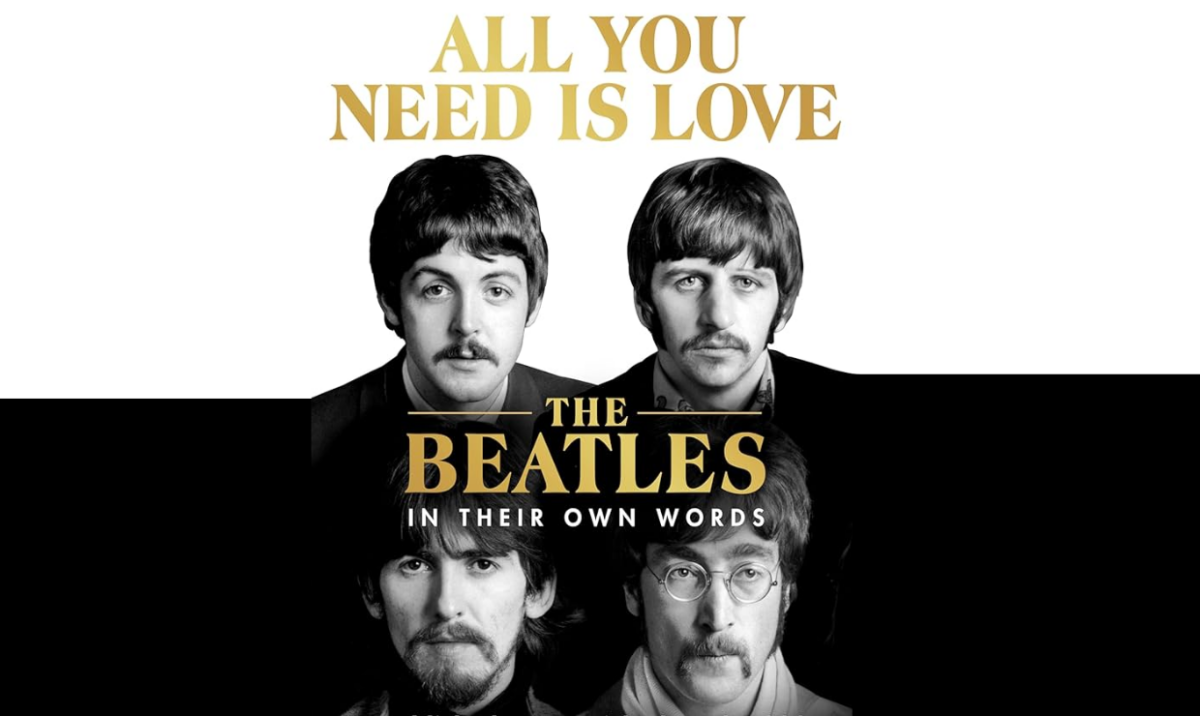
Finally, two noteworthy recent music books I urge you to pick up focus on two bands that changed the world: the Beatles and Nirvana. I did not read Michael Azerrad’s Come as You Are: The Story of Nirvana upon its release in 1993, but I recall that it made waves. Azerrad’s revisiting of the original text, The Amplified Come as You Are: The Story of Nirvana (HarperOne), is downright astonishing. It is also deeply moving. During a chapter on frontman Kurt Cobain’s intense stomach pain, Azerrad offers a present-day reflection on Cobain’s agony: “It must have been intensely frustrating to be playing universally acclaimed, commercially successful music with an awesomely powerful band to huge crowds of adoring fans, only to have it all undercut by chronic, acute physical pain, which can also cause awful psychological damage.” Come as You Are is filled with these somber thoughts, but the result is one of the great music bios. Like Come as You Are, All You Need Is Love: The Beatles In Their Own Words (St. Martin’s Press) by Peter Brown and Steven Gaines has a unique selling point for fans––it consists of never-before-published interviews recorded by the authors during the making of 1983’s The Love You Make. Among those sharing shockingly candid thoughts are Paul McCartney, Ringo Starr, the late George Harrison, and the likes of Yoko Ono, Cynthia Lennon, and Pattie Boyd. Even legendary monster Allen Klein is interviewed, and shares some surprising thoughts. “[Y]ou have to understand what was going on,” Klein told Gaines in 1980. “John wanted to leave. John wanted it over. Paul McCartney never left the Beatles. He didn’t end it. John did.”
Recent or upcoming adaptations:
It is always interesting to tackle books recently adapted for the big screen, as well as those on the way. Matthew Vaughn’s adaptation of Argylle (Bantam) by Elly Conway drew a very mixed response upon release. The spy thriller has its pleasures, as does Conway’s novel. Of course, the revelation that Conway is actually two people––author and screenwriter Terry Hayes (more on him shortly) and novelist Tammy Cohen––makes Argylle the novel even more intriguing.
The Oscar-winning drama The Zone of Interest (Vintage) continues to inspire thinkpieces, and it has also caused renewed interest in the late Martin Amis’ Auschwitz-set 2014 novel. It is a very different but no less impressive achievement.
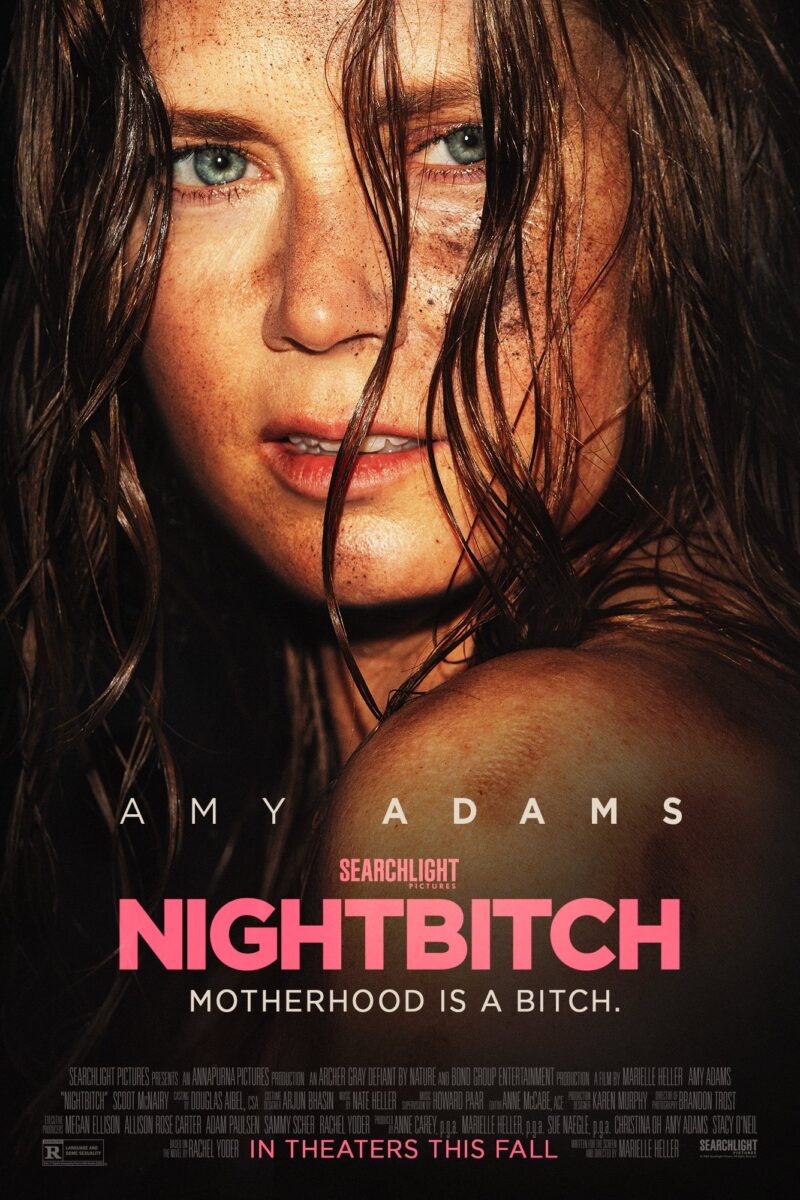
Coming in November is Robert Zemeckis’ film of Here (Pantheon), the deeply moving graphic novel by Richard McGuire. It is the story of one room and the people who have lived there over the course of many (many, many, many) years, and it is stunning. Also arriving that month is Edward Berger’s film version of Conclave (Vintage), the hugely acclaimed Robert Harris mystery centered on a papal conclave. Marielle Heller’s Nightbitch (Anchor Books), starring Amy Adams, is due in December, and the novel of a woman-turned-dog (!) by Rachel Yoder is lovably strange and downright hilarious.
Taika Waititi is serving as executive producer for Hulu’s series 2024 adaptation of Interior Chinatown (Vintage) by Charles Yu. The novel is a stellar slice of metafiction about a “Generic Asian Man” who aspires to be “Kung Fu Guide.” Also expected to air in 2024 is a series version of harrowing true story Say Nothing: A True Story of Murder and Memory in Northern Ireland (Anchor Books) by Patrick Radden Keefe.
We are going to have to wait several years to see City in Ruins (William Morrow) by Don Winslow; the two earlier entries in the author’s Danny Ryan trilogy, City on Fire and City of Dreams, must come first. Ruins is said to be Winslow’s final novel, and if that is indeed the case, he is going out with guns blazing. The story of a mob enforcer turned businessman is hugely entertaining, and will provide Austin Butler with a fine role.
Novels in brief:
Our previous books column teased a lengthy rundown of recent noteworthy novels. Take a deep breath, because here we go …
In the previous section we mentioned Terry Hayes, who is perhaps best known for his work as co-screenwriter for The Road Warrior. Hayes is also an accomplished novelist, and his first book, I am Pilgrim, was a bestseller. His new thriller, The Year of the Locust (Atria Books), is similarly intense. The 700-page novel is about a “denied-access-area” CIA spy.
Next, three novels that touch on the world of film. The Girl From the Grand Hotel (Blackstone Publishing) by Camille Aubray is a historical novel set during the first Cannes Film Festival in 1939. This gripping story of a young American who becomes entangled with Nazi spies is based on a true story. The brilliantly realized novel The Queen of Sugar Hill (William Morrow) by ReShonda Tate is based on the life of Hattie McDaniel, the first Black person to win an Oscar. This is a tremendously moving account of a trailblazing woman who deserved even greater success––but instead battled discrimination and hardship. And the sweet comedy We Could Be Heroes (G.P. Putnam’s Sons) by Philip Ellis follows the romance between the star of a superhero movie and a part-time drag queen.
A number of recent thrillers have grabbed my attention, starting with End of Story (William Morrow) by A. J. Finn. Finn’s previous novel, The Woman in the Window, was a twisty gem. Story uses one of my favorite plot devices: the reclusive author with a mysterious (and possibly murderous) past. Similarly, All Good People Here (Bantam) by Ashley Flowers finds a fresh approach for an oft-utilized trop––a twentysomething journalist returns home with an eye toward solving a long-ago crime. In The Silence in Her Eyes (Atria Books), Armando Lucas Correa has crafted a spellbinding novel about a young woman with motion blindness who believes her neighbor is in danger. A cult known for brainwashing a teenage girl is investigated by a true crime author in Janice Hallett’s riveting The Mysterious Case of the Alperton Angels (Atria Books). Nobody’s Angel (Book 1 of 2: Eddie Miles) (Hard Case Crime) by Jack Clark is as gritty and hard-boiled as you would expect from a novel praised highly by Quentin Tarantino. It is a brisk (a little more than 200 pages) read about a cabbie, a prostitute, and a serial killer on the loose. (Do yourself a favor and search up Jack Clark; his backstory cements the authenticity of his writing.) Jordan Harper, author of She Rides Shotgun, returns with a mesmerizing Los Angeles noir-nightmare called Everybody Knows (Mulholland Books). And Fervor (Avid Reader Press) by Toby Lloyd is an astonishing thriller about a devout Jewish family in London who believe their daughter has become a witch.
Mysteries of note include Anna O (Harper) by Matthew Blake, an imaginative story of a young woman who murders two people in her sleep and becomes a tabloid sensation. Taking place in Rome during the 1940s, The Curse of Pietro Houdini (Avid Reader Press) by Derek B. Miller is a dazzling piece of art-heist fiction. The Fortuner Seller (St. Martin’s Press) by Rachel Kapelke-Dale begins as the story of a group of friends at Yale and becomes something darker and uniquely unsettling. And one of my favorite authors, Edith Wharton, is the protagonist of a delightful slice of historical fiction. The Wharton Plot (Minotaur Books) will intrigue fans of books like The Alienist.
The horror novel renaissance continues with several killer new entries. The God of Endings (Flatiron Books), from first-time author Jacqueline Holland, and Thirst (Dutton) by Marina Yuszczuk (translated by Heather Cleary), are two of the freshest vampire stories in years. Popular novelist Riley Sager’s The Only One Left (Dutton) is a Gothic treat set at a cliffside mansion. It moves between a 1920s massacre and the accused killer’s desire to tell all to a caregiver in the 1980s. Note that Sager’s next novel, Middle of the Night (Dutton) is due for release on June 18.
Home Is Where the Bodies Are (Blackstone Publishing, Inc.) by Jeneva Rose is a fiendishly creepy read centered on three adult siblings who discover a VHS tape that seems to reveal that their parents may be murderers. Gothikana (Bramble) by RuNyx is an erotic dark academia romance. And Maddalena and the Dark (Flatiron Books) by Julia Fine is a bit more thriller than horror, but it is just as intense and eye-opening as the other novels on this list. Set in 18th-century Venice, it is the sensuous and suspenseful story of two young women who are drawn to each other while attending a prestigious music school.
Let’s dial back the intensity for some comedies. Slate’s Dan Kois is the author of Vintage Contemporaries (Harper Perennial), about a young woman coming-of-age in 1990s New York, and then grappling with her life choices in 2005. Ellipses (Dutton) by Vanessa Lawrence is a sharp-tongued winner about a toxic mentorship in the treacherous New York media world. An alien attempting to understand this place called Earth is the protagonist of the charming Beautyland (Farrar, Straus and Giroux) by Marie-Helene Bertino. The moderator of the comments section of an online news outlet falls for a middle-aged journalist in the hilarious Green Dot by Madeleine Gray (Henry Holt and Co.).
Bringing us to a close are some books for fans of the MCU and Star Wars universe. Timothy Zahn will forever be a beloved figure amongst Star Wars fans for his Thrawn trilogy, and two of his other Wars’ efforts––Outbound Flight and Survivor’s Quest (Random House Worlds)––have been reissued under the Star Wars Legends banner. Meanwhile, 1998’s Wraith Squadron by Aaron Allston (Penguin Random House Audio) is part of the Legends recordings lineup. Finally, The Phantom Menace is back in the news, and Star Wars: The Living Force by John Jackson Miller is set during the year before Episode I. An audio version of this Jedi Council tale is also available and read by Marc Thompson. Finally we come to Loki, the God of Mischief himself. What If … Loki Was Worthy? A Loki and Valkyrie Story by Madeleine Roux (Random House Worlds) is a nice companion to the Marvel animated series, one that opens with the death of Thor. I was chuffed to see that it is partially set in my hometown of Buffalo, NY. I always thought Loki had the demeanor of a Bills fan.
